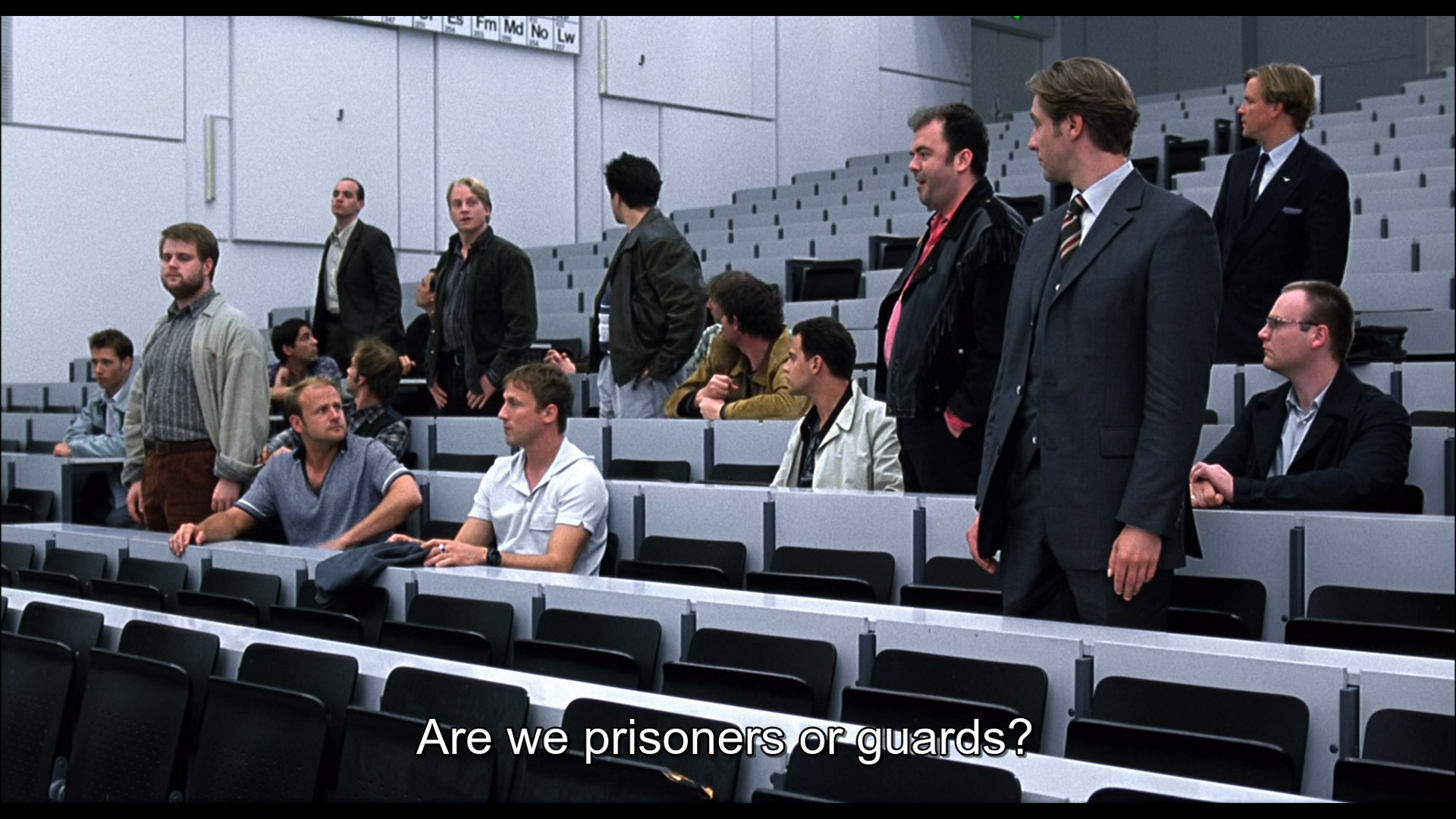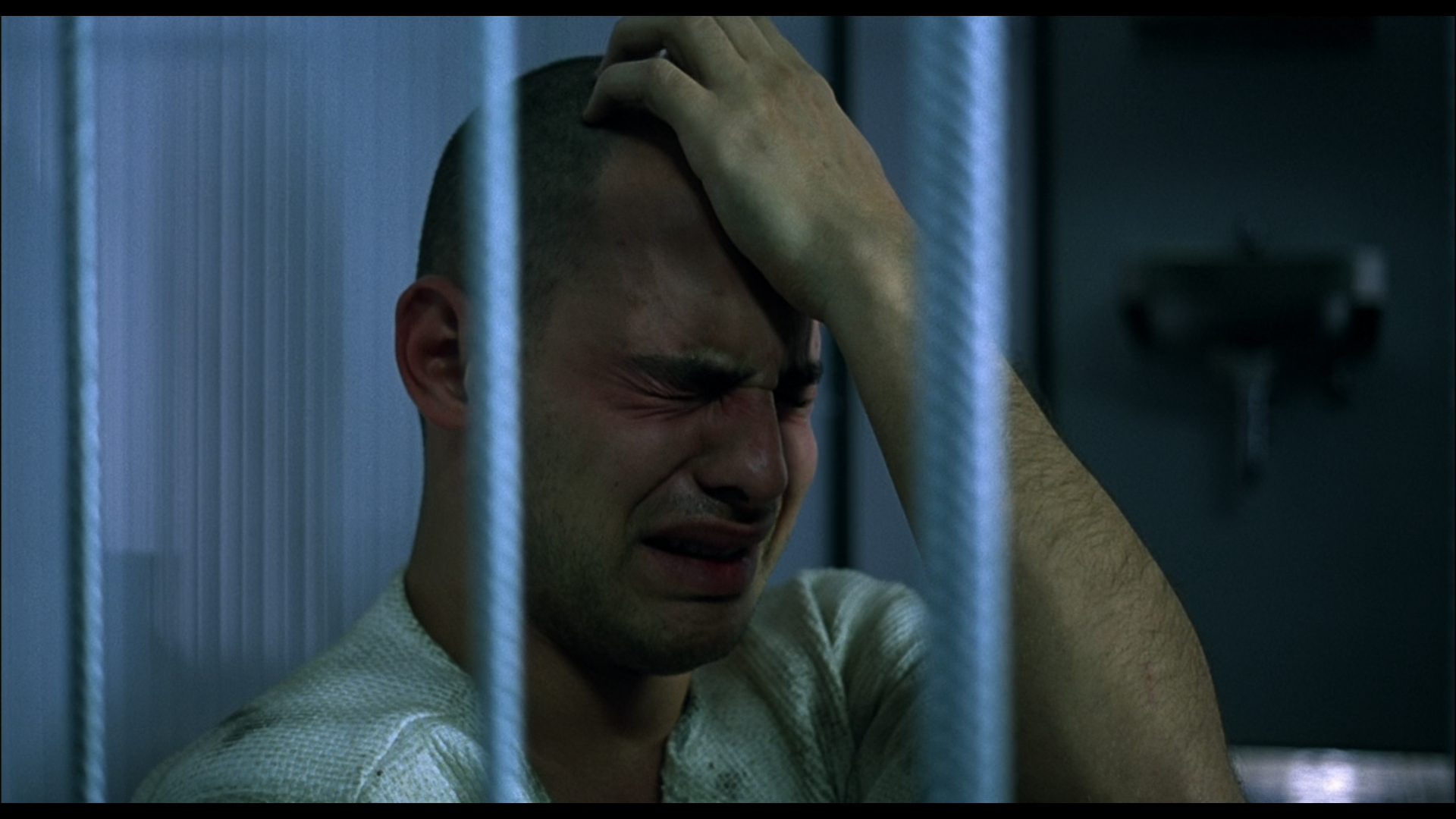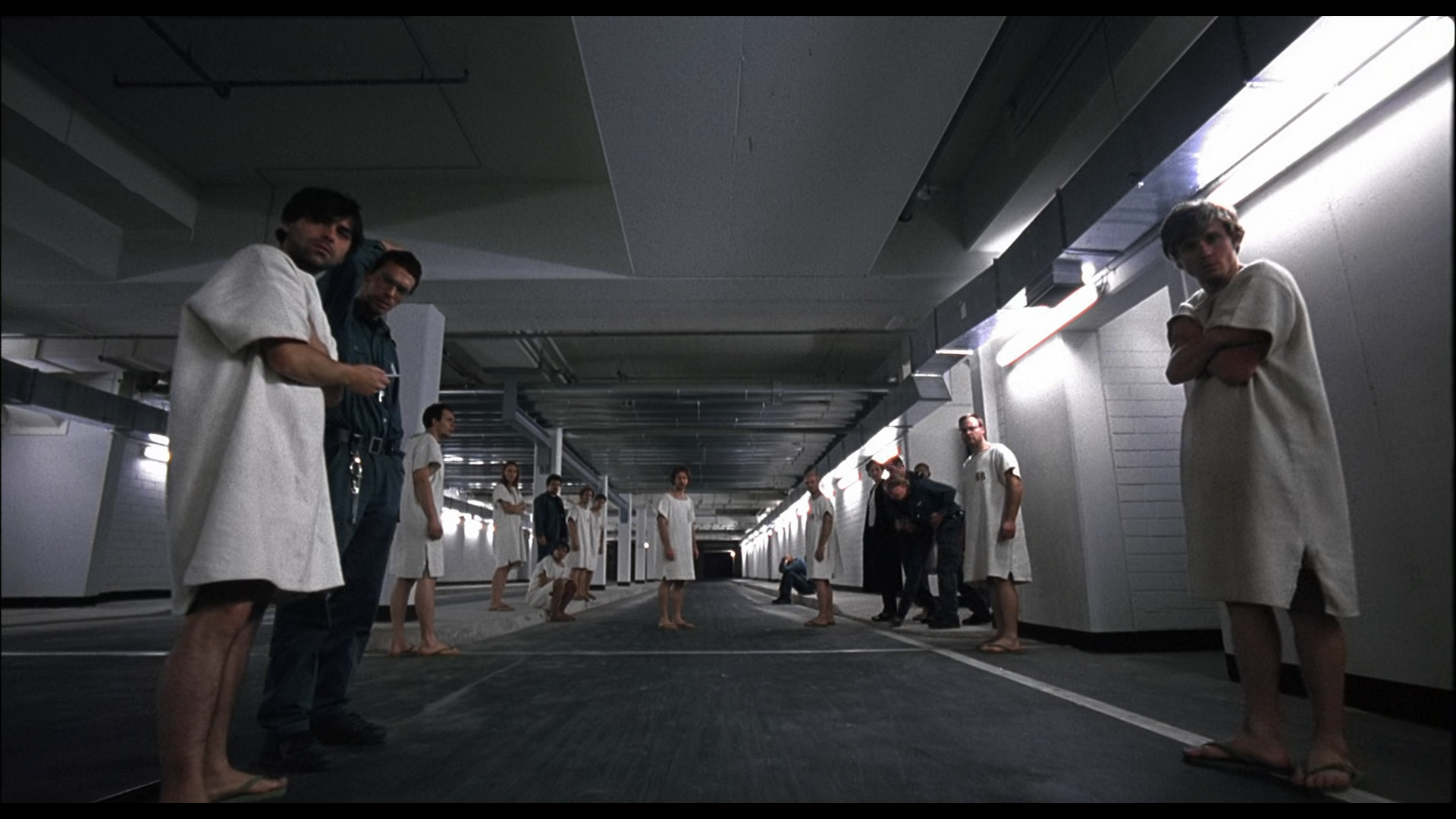I watched the movie The Experiment and thought about whether to be a hero or a system.
The Stanford simulation made me think about the military as a system. Both The Experiment and the German movie Das The Experiment, released in 2010, are based on the Stanford Prison Experiment conducted by Professor Philip Zim Bardo. The experiment began with the question of what life in prison would be like. Before this experiment, there had been experiments done on prison life, but it was hard to know what it was really like because of inmates’ distrust of researchers. So Zimbardo and his graduate students devised a prison simulation. They recruited university students to participate in the experiment through newspaper advertisements. The experiment was planned for a total of two weeks, and participants would be paid $15 per day. There were many applicants, and 20 participants with no criminal record and no special mental or physical conditions were selected. The participants were randomly divided into eight inmates and 12 guards. With Professor Jim Bardo as the prison supervisor, one graduate student as the prison warden, and two graduate students in charge of supply and administration, the 24-person simulation began. And the results were shocking. What was supposed to be a two-week experiment ended after six days due to depression, psychological anxiety, and neurological disorders among the inmates. During that time, violence and sexual abuse emerged between the inmates and the guards. Just six days earlier, they were ordinary college students.

At first, the inmates were easy-going about the situation and thought they would just stay and earn money. On the other hand, the guards are instructed by Professor Jim Bardo and his graduate students to treat the inmates like prisoners. This leads to friction between the inmates and the guards, and the inmates riot against the coercive behavior of the guards. This leads to the guards becoming immersed in their roles, and the abuse becomes more intense. Restricting access to the bathroom and reducing bedtimes put pressure on inmates. Surprisingly, the inmates became increasingly obedient to the coercive changes. An example of this obedience was seen at the parole board during the experiment. All the inmates defended themselves for parole, even though they hadn’t actually committed any crimes. They asked to be released, arguing that freedom was more important than money. If they said they would no longer conduct experiments, they could end their own experiments and walk out of prison. But after the committee meeting, they were handcuffed again and taken to the basement of the prison. None of the inmates offered to stop the experiment, but rather envied the parolee and became mentally exhausted.

Even more surprising is the transformation of the prison simulator, Professor Jim Bardo and his graduate students who created the system. They act as both researchers and participants in the experiment, working to maintain the system. They are desperate to keep the system going, despite the clearly inhumane behavior going on inside it. They demanded that the guards who could not show coercion be more oppressive, and that prisoners who showed rebellion be forced to obey them. The goal of studying prison life became less about research and more about maintaining the prison itself. Furthermore, the families of the inmates who visited for visits did not question their sons’ imprisonment. Even the mother of one inmate who saw abnormalities in her son only confirmed them and did not demand an end to the experiment. Furthermore, a fellow social psychologist who visited the prison made comments about the inmates, such as that they were dirty and needed to be handled more roughly. This is a very disturbing picture. A system is created by a person or a group of people, but even the people who create the system are affected by it. Not only that, but even people who are not part of the system at all are affected when they enter it. It’s like a magic box that changes everything that enters it.

With the inmates, guards, and even the designers transformed, how could the experiment ever end? It was a fellow psychologist who came to observe the experiment and demanded that it be stopped. She was nauseated by the dehumanization of the prison and by the sight of her fellow psychologists that she had never seen before. After arguing with her, Professor Jim Bardo realized the problems with the experiment and ended it. Through her presence, he realizes the importance of heroes. Of the dozens of people who came to watch the experiment, she was the only one who called for it to be stopped. She was the only one who spoke up to the system’s architect and authority. Jim Bardo doesn’t see heroes as mythical, larger-than-life actors, but as people who resist and oppose the existing system. We need heroes who can make their voices heard and not be swept away by the systems and circumstances that will eventually be put in front of us.
The results of the Stanford prison simulation show that it is the system that changes people. Of course, certain personal characteristics of the person may have an impact, but the impact of the system is beyond our imagination. The results of these experiments made me think about my own experience in the military. All soldiers, including myself, were part of the same group performing the important task of national defense, and in order to perform national defense and prepare for war in case of emergency, we need a command system that can obey orders and react quickly. In such a system, military life is lived. But that doesn’t justify coercive and inhumane behavior. Nevertheless, anyone who enters this system will eventually follow its behavior. It doesn’t matter what kind of person you are in society, you will be affected by the system. In the end, your behavior was an act of surrender to the system. It takes a hero to get out of this system. In fact, 10 years ago, there were more inhumane acts like violence in the military. Today, there is still an atmosphere of coercion, but the violence seems to be much less. These changes didn’t just happen. We don’t know it, but there were many heroes who spoke out against the existing system, and that’s what made the change possible.
We are always living within a system. We exist within many systems, from the smallest family to the largest nation. Systems like the family and the state are likely to be assimilated to the point where we don’t even notice change because we’ve been in them for so long. But there is also the possibility that we will suddenly and unexpectedly find ourselves inside a system, as in the Stanford Prison Experiment. When that happens, will we succumb to the system or become a hero? We may have adapted to the system, but now we need to find the strength to speak up and say no to injustice. We should strive to be real heroes, not mythical ones.
 I’m a blog writer. I want to write articles that touch people’s hearts. I love Coca-Cola, coffee, reading and traveling. I hope you find happiness through my writing.
I’m a blog writer. I want to write articles that touch people’s hearts. I love Coca-Cola, coffee, reading and traveling. I hope you find happiness through my writing.